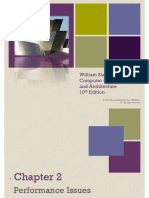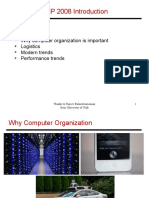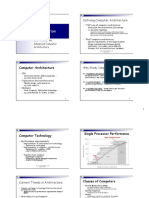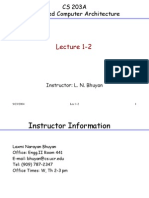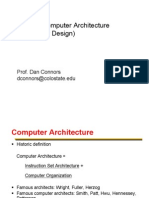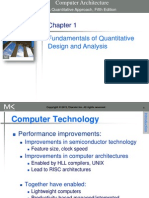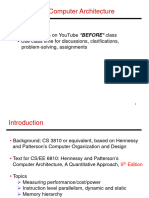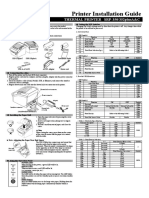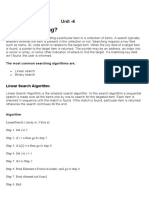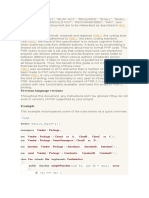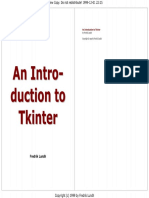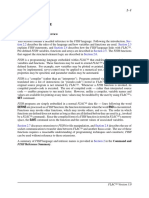0% found this document useful (0 votes)
37 views57 pagesPerformance
The document discusses advancements in computer architecture, focusing on the significant improvements in performance and capacity of computer systems over the years. It highlights the evolution of microprocessors, including techniques like pipelining, branch prediction, and multicore processing, which enhance execution speed and efficiency. The document also addresses challenges such as power dissipation and memory latency that arise with increasing clock speeds and logic density.
Uploaded by
Rajaul IslamCopyright
© © All Rights Reserved
We take content rights seriously. If you suspect this is your content, claim it here.
Available Formats
Download as PDF, TXT or read online on Scribd
0% found this document useful (0 votes)
37 views57 pagesPerformance
The document discusses advancements in computer architecture, focusing on the significant improvements in performance and capacity of computer systems over the years. It highlights the evolution of microprocessors, including techniques like pipelining, branch prediction, and multicore processing, which enhance execution speed and efficiency. The document also addresses challenges such as power dissipation and memory latency that arise with increasing clock speeds and logic density.
Uploaded by
Rajaul IslamCopyright
© © All Rights Reserved
We take content rights seriously. If you suspect this is your content, claim it here.
Available Formats
Download as PDF, TXT or read online on Scribd
/ 57

















